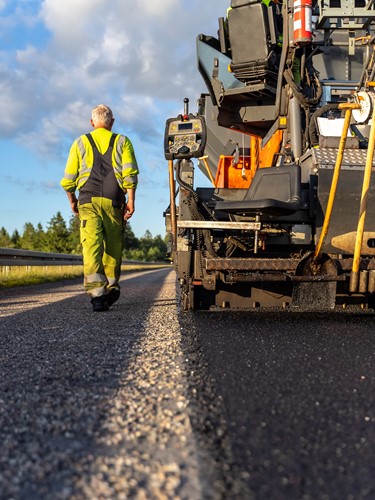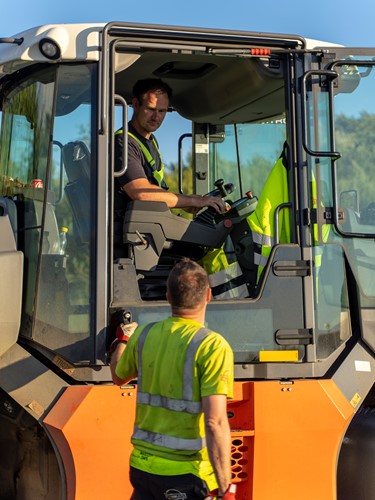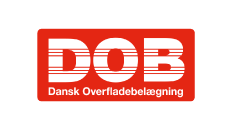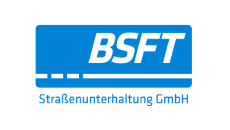- Pankas A/S - Denmark
- Dansk Overfladebelægning I/S - Denmark
- Sjællands Emulsionsfabrik I/S - Denmark
- Müritzer Oberflächentechnik GmbH - Germany
- AS Asphaltstraßensanierung GmbH - Germany
- TAS GmbH - Germany
- Rask Mecklenburg GmbH - Germany
- Rask Brandenburg GmbH - Germany
- BSFT Straßenunterhaltung GmbH - Germany
- Pankas Sp. z o.o. - Poland
- Inreco Emulsja Sp z o.o. - Poland
- Inreco Asfalt - The Czech Republic
- Inreco Kft - Hungary
- Inreco Remix Srl. - Romania
- Inreco Bitumen Srl. - Romania
- Inreco d.o.o. - Serbia
- OOMS producten Netherlands
New climate-friendly asphalt on Herning motorway
In the beautiful landscape around the factory in Silkeborg lies the Herning motorway which Pankas paved this summer.
Back in autumn of 2021 Pankas won the project of laying the climate-friendly asphalt for a stretch of 12 km. The project comprised of both the eastward and westward direction. The project was completed in 4 weeks in June, during which almost 17,000 tonnes of climate-friendly asphalt was paved. It is to date the biggest single project on climate-friendly asphalt tendered by the Danish Road Directorate in 2022.
The stretch of road which is to benefit from the climate-friendly layer stretches from Funder at Silkeborg to Bording at Herning; a total of 247,000 m2. The asphalt is divided between 230,000 m2 of motorway and access ramps and 17,000 m2 of lay-bys.


Recycling the old layer
The old layer is milled at a depth of about 3 cm and is transported the short way to the factory in Silkeborg. The milled layer is sorted by a sieve, which results in three fractions for recycling: A third becomes the 0–6 mm recycled material which is directly used in the new (locally produced) climate-friendly asphalt. Another third becomes 6–16 mm recycled material and is directly used in other types of asphalt. The last third needs to be crushed before it can be recycled.
How it was done
After milling the old layer, the state of the underlying layer was checked. Reparations of the supporting layer is essential for the life span of the whole road and for how comfortable it is to motorists. After a few reparations were done to the supporting layer, the new climate-friendly layer was paved. A core sample was then drilled to check the newly paved layer. Finally, lanes, exits, and entrances were marked. The result is a more even roadway and a better driving experience for motorists.
To compress the time spent paving as much as possible, Pankas chose to make use of the weekends. This was done out of consideration for the traffic-related challenges that road renovations cause, and to keep our heavy equipment team running throughout the period and despite the size of the job. The work was done at night on weekdays from 17:00–06:30 and throughout the day during the weekends. Because of this, it was possible to renovate the underlying layer, to pave it all, and to mark the road within the appointed time of 4 weeks: All in all, to the least possible inconvenience of motorists and of the rest of the production of Pankas.
The climate-friendly layer was paved at full road length by the use of two pavers driving in tandem, one in front of the other. To ensure that no unnecessary stops were needed when paving, a feeder was attached to the pavers – a requirement by the Danish Road Directorate. The feeder ensured that both pavers were continuously fed hot-mixed asphalt from the idle trucks.
An IR camera (RoadScan) was attached to each paver for thermographing the paved layer. Such measurements are used for controlling the temperature of the asphalt – also a requirement by the Danish Road Directorate.
Facts about the climate-friendly asphalt
What is characteristic about the climate-friendly layer is the reduced rolling friction of tyres on the asphalt layer, reducing the fuel consumption of cars and thereby the final CO2-emission without reducing its life span or compromising on traffic safety. The layer also has a noise-reducing effect and high general and wheel-track durability.
The climate-friendly layer contains materials such as granite, lime, and cement which all contribute to its durability. Polymer-modified bitumen is also added to the layer as it ensures great elasticity and contributes to a longer life span than traditional SMA layers. The surface is tightly structured with a short depth that does not affect the general friction but contributes to the low rolling friction.
Studies done by the Danish Road Directorate show that the use of climate-friendly SMA 8 results in a reduction in average fuel consumption of at least 1.2 % for the full life span of the layer and in comparison to traditional SMA layers. It does not sound like much, but for big motorways that see about 50,000–100,000 vehicles a day (on average for a full year), the accumulated CO2-emission savings are significant.
Read more about the Danish technologies here














